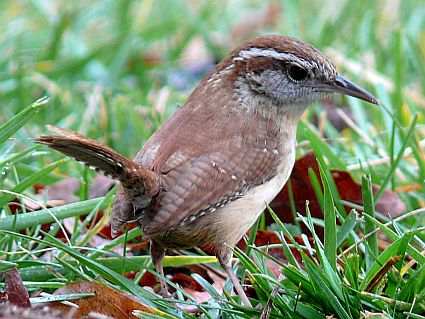Carolina Wren Cedar Nest Box
$49.99
$56.99
You Save : $7 (12.28%)
Discount (Qty) :
-
2
-
3
$2.00 off each item
-
4
-
5
$2.50 off each item
-
6
-
12
$3.00 off each item
- SKU: SE546
- Availability: In Stock
- Shipping:
Related Categories:
Category : Wren/Chickadee Houses
Description
Built with specifications in mind for Carolina Wrens!
This bird house will provide a comfortably warm roosting spot in winter or nesting box in spring!
The Carolina Wren Cedar Nest Box is constructed of western red cedar. Wood stock is rough-cut on both sides so birds can grip interior and exterior surfaces. The side wall pivots for easy cleaning. It has a 4" by 4" floor (inside dimensions), 8" floor to ceiling (inside front), 1 1/2" diameter entrance hole located 6" above the floor (to top of hole) and ventilation openings in the floor and under the roof. 1-1/2" entrance hole is sized just right for Carolina Wrens. Chickadees, Nuthatches, Titmice, Wrens, Tree and Violet Green Swallows may use this nest box. Hangs from a coated cable. Made in the USA.
Dimensions: 8" x 8-1/2" x 8" (overall)

Save $$ when you buy two or more Carolina Wren Cedar Nest Boxes! Discount given at checkout.

Carolina Wren Thryothorus ludovicianus
The Carolina wren is an adaptable dweller of forestlands, swamps, farms, and tree-filled human communities.
Carolina wrens (Thryothorus ludovicianus) are small but very vocal animals. Males are especially outgoing and are the only ones to produce songs. They employ one of the loudest songs per volume of birds. They are apt to sing anytime and anyplace they happen to be.
Carolina wrens are usually found in pairs, and each pair stays on its home territory all year long. Because these wrens cannot survive cold winters, they tend to live in southern climes, and are the official state bird of South Carolina. They are found as far north as the Great Lakes, and warm winters spur them to extend their range northward. However, when colder years arrive, many northern birds are unable to survive and fringe populations plummet.
These large wrens feed on insects, larvae, and spiders but also eat berries and fruit. They forage on or near the ground and hop along far more often than they fly. They use their bills to poke about and search for hidden meals and try to remain close to brush in which they can hide.
Carolina wrens are monogamous, and breeding pairs may stay together for years. They work together to construct nests—which may be found almost anywhere. Wrens nest in natural locations such as branches, tree-holes, and stumps but also frequent windowsills, mailboxes or other attractive human-made spots.
Females lay about four eggs and incubate them for two weeks while their mates bring them food. Both parents feed their chicks for an additional two weeks before they gain independence. A mating pair of Carolina wrens may have several broods each year.